3. Available Tests
The following RFC 2889 tests are fully supported by the Xena2889:
3.1. Throughput and Forwarding Rate Tests
To determine the throughput, frame loss and forwarding rates of DUT/SUTs for 3 configurations:
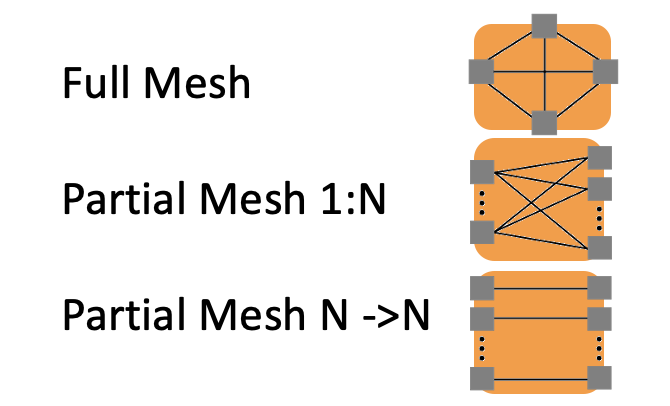
Fig. 3.1 Rate Test Topology
Throughput: Highest data rate that can pass through the DUT/SUT without frame loss
Forwarding Rate: Highest data rate that can pass through the DUT/SUT - frame loss may be experienced
Flood count: Any frame originating from the DUT/SUT MUST not be counted as a received frame. Frames originating from the DUT/SUT MAY be counted as flooded frames or not counted at all.
3.2. Congestion Control
To determine how a DUT handles congestion. Does the device implement congestion control and does congestion on one port affect an uncongested port.
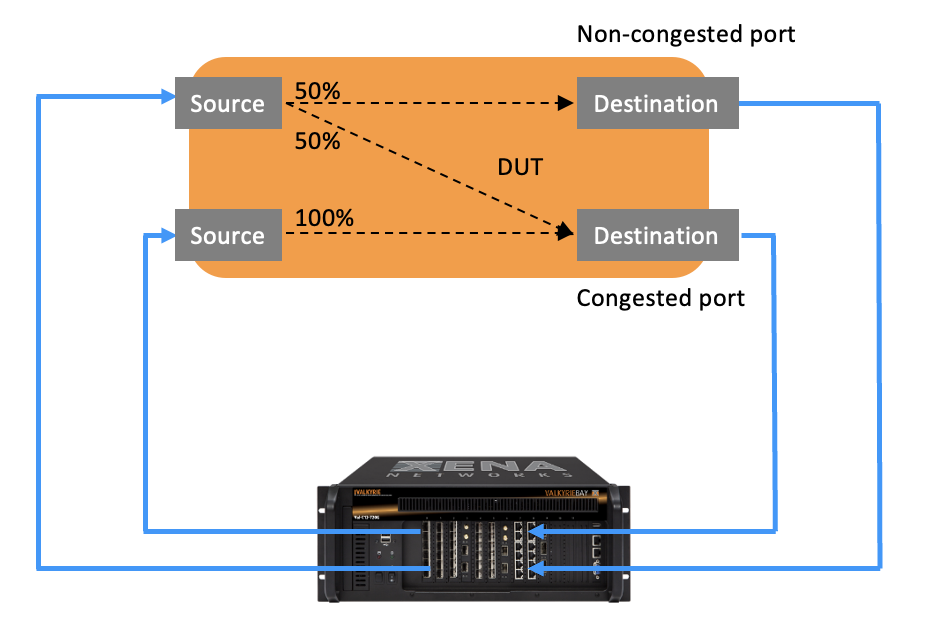
Fig. 3.2 Congestion Control Test Setup
3.3. Forward Pressure
The Forward Pressure test overloads a DUT/SUT port and measures the output for forward pressure.

Fig. 3.3 Forward Pressure Test Setup
3.4. Maximum Forwarding Rate
Measure the peak value of the Forwarding Rate when the Offered Load is varied between the throughput and the Maximum Offered Load.
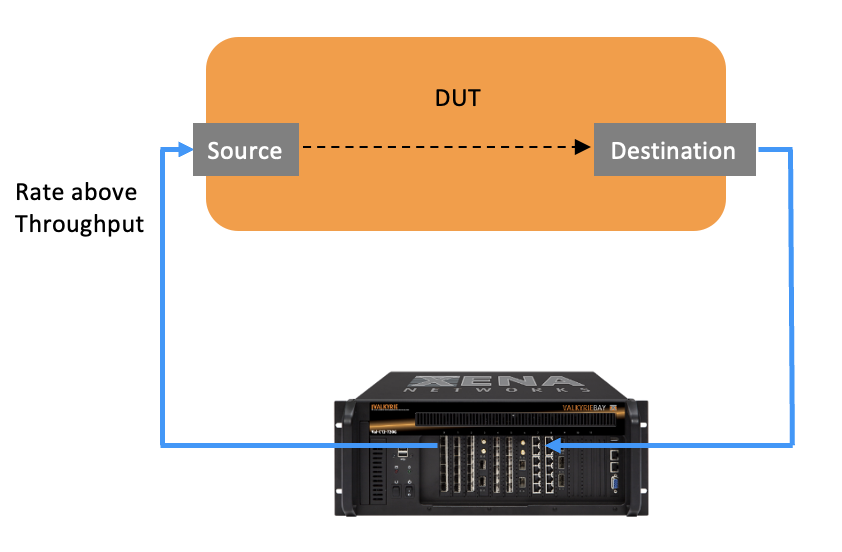
Fig. 3.4 Maximum Forwarding Rate Test Setup
3.5. Address Caching Capacity
To determine the address caching capacity of a LAN switching device.

Fig. 3.5 Address Caching Capacity Test Setup
Procedure:
Send traffic with a range of MAC addresses as source addresses from tester to learning port - DUT caches as many MAC addresses as possible
Send traffic with same range of MAC addresses as destination MAC addresses from tester to test port
Traffic with non-cached MAC addresses are broadcasted and reach the Monitoring port
If all MAC addresses are cached, no traffic will reach Monitoring port
Test repeats until no traffic is detected on Monitoring port
3.6. Address Learning Rate
To determine the rate of address learning of a LAN switching device.

Fig. 3.6 Address Learning Rate Test Setup
Procedure:
Send traffic with a range of MAC addresses as source addresses from tester to learning port - DUT caches as many MAC addresses as possible
Send traffic with same range of MAC addresses as destination MAC addresses from tester to test port
Traffic with non-cached MAC addresses are broadcasted and reach the Monitoring port
If all MAC addresses are cached, no traffic will reach Monitoring port
Test repeats until no traffic is detected on Monitoring port
3.7. Errored Frames Filtering
Important
Supported with the exception of the Dribble Bit Errors and Alignment Errors tests.
Determine the behavior of the DUT under error or abnormal frame conditions. The results of the test indicate if the DUT/SUT filters the errors or simply propagates the errored frames along to the destination.
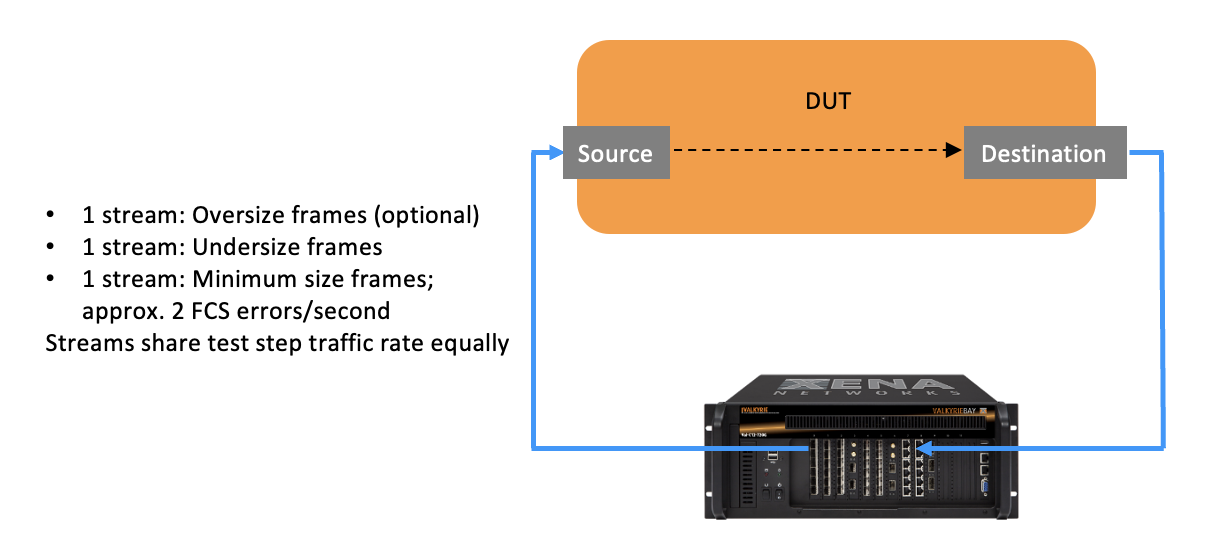
Fig. 3.7 Errored Frames Filtering Test Setup
3.8. Broadcast Forwarding
Determine the throughput and latency of the DUT when forwarding broadcast traffic. The ability to forward broadcast frames will depend upon a specific function built into the device for that purpose. It is therefore necessary to determine the ability of DUT/SUT to handle broadcast frames, since there may be many different ways of implementing such a function.
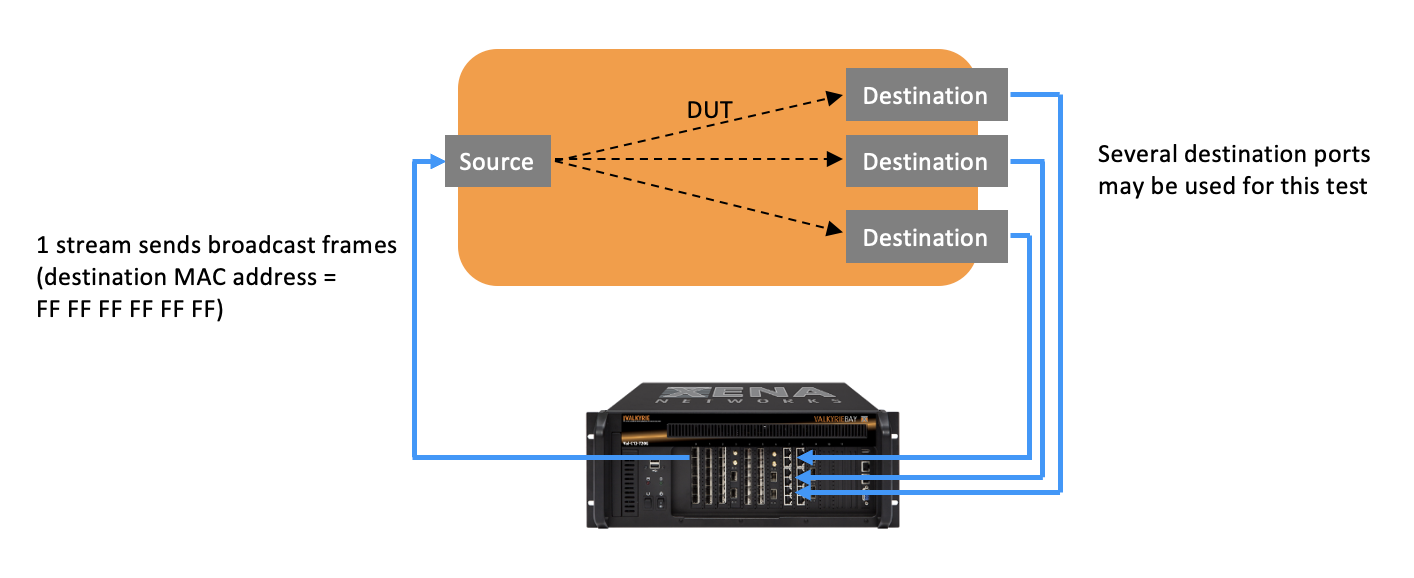
Fig. 3.8 Broadcast Forwarding Test Setup